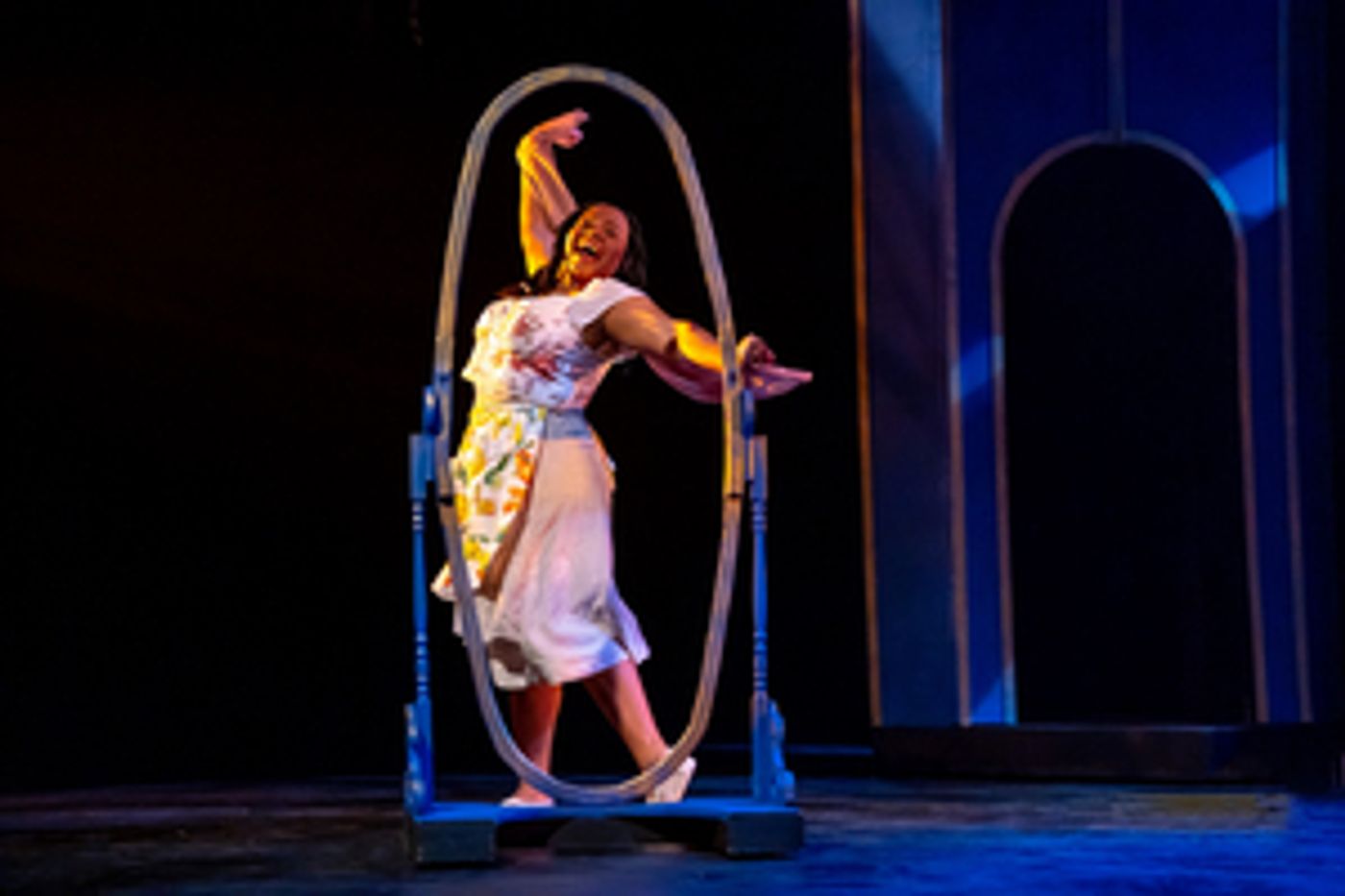Review: CINDERELLA at Synetic Theater
In this world premiere production, the timeless story of Cinderella is brought to life through innovative physicality.
The story of Cinderella has been told and retold around the world countless times, from its probable origins in Egypt to The Brothers Grimm version to dozens of film and TV renditions. Over the centuries, it's been adapted for different ages, cultures, and tastes. Synetic Theater's adaptation transcends boundaries of age and language by presenting a wordless version of the classic story designed to charm both children and adults. In this world premiere production, adapted and directed by Maria Simpkins (who also stars in the title role), the timeless story of Cinderella is brought to life through innovative physicality.
Telling stories through movement is Synetic Theater's specialty. Synetic was founded by Georgian dance, theatre, and film artists Paata and Irina Tsikurishvili. This husband and wife team moved to the U.S. in the '90s and premiered their first production at Synetic, a wordless adaptation of Hamlet, in 2001. According to Synetic Theater's website, their work "combine[s] traditions of the Caucasus with distinctly American styles to tell classic stories through movement, music, technology and visual arts." Synetic has received 143 nominations and 34 Helen Hayes Awards to date and as well as other accolades for their innovative contributions to the D.C. area's theatre scene.
Synetic's Cinderella utilizes a 6-person company, a score with compositions by Synetic company member Konstantine Lortkipanidze, creatively minimalistic but flexible scenic design (Aleksandr Shiriaev), and costumes complete with very shiny shoes (Moyenda Kulemeka) to depict Cinderella's journey without words. Music is the heartbeat of the show, which opens with Simpkins as Cinderella dancing alone in her room, letting the audience in on her joyful daydream. When her stepfamily enters, the music changes from a lively dance to a rigid classical piece. These changes in musical tone are key to the storytelling as the auditory backdrop shifts between the playfulness of Cinderella and the Prince's inner lives and the oppressive pull of their household obligations.
The costumes are as wonderfully eclectic as the music, ranging from the stepsister's chic pair of magenta lace-up boots to the fairy godmother's fanciful flower-adorned dress. Another visual highlight of the show was a sequence involving dancing fireflies portrayed by bright golden lights held between the performers' fingers. The lighting design by Ian Claar was able to shine quite literally as sparks appeared to float around the firefly dancers while they spun flowing pieces of tulle fabric to herald Cinderella's transformation.
Each of the show's performers brought their own whimsical spirit to Cinderella's physical storytelling. Covenant Babatunde was a delightful scene-stealer as the Stepsister, and Robert Bowen Smith was a pitch-perfect counterpart as the Stepfather. Pablo Guillen as the Prince and Irene Hamilton as the Valet had hilarious chemistry, keeping the audience on the edge of their seats throughout their hijinks. Karina Hilleard was dazzling as the Fairy Godmother and also brought warmth and grace to one of the most moving sequences of the show, in which Cinderella dances in parallel with the memory of her mother.
There's something deeply personal about the world Simpkins creates in Cinderella. While there are certainly moments of slapstick that made the children in the audience giggle, the emotional turning points in the show use physical theatre to draw the audience into events as they unfold rather than painting in broad, cartoonish strokes. Simpkins' performance in particular was absolutely magnetic: instead of conveying Cinderella's story through big gestures alone, her performance invited the audience to stay curious and keep looking more closely.

The most salient motif in the show was the repeated movement of rolling the (empty) frame of a full-length oval mirror around the stage. Multiple characters took their turn in the mirror, examining their reflections in moments of vanity, despair, and wonder. The mirror shows us that the story of Cinderella - one that has resonated so strongly with so many people over the centuries - is not just about overcoming class constraints but also about concepts of transformation and beauty more broadly. In her director's note, Simpkins reflects on the themes of Cinderella that connect its many adaptations across time and geographical location and writes that "it became very clear to me that exploring the impact of self image through community would be central to this particular production." The magic of Synetic's Cinderella comes from the way that it addresses the idea of identity in community: the production refuses to shy away from intense moments of connection and loss while simultaneously creating a glittering spectacle for the little ones - all without saying a word.
Running time: approximately 50-60 minutes
Cinderella at Synetic Theater is playing through Sunday, December 26th. Tickets are $30 for adults, $15 for kids, ages 2 and under are free. You can purchase tickets on Synetic Theater's website here, in-person at the box office an hour before showtime, or via phone. Click here for information about Synetic Theater's Covid-19 safety protocols.
Reader Reviews
Videos

